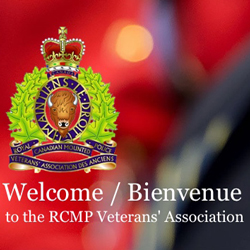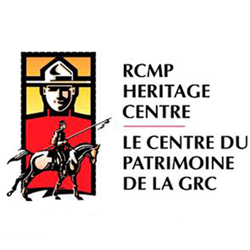S/Major John Bray
With previous British military experience, John Bray was drawn to the ranks of this newly formed para-military group for a sense of adventure in the Canadian North-West Territories.
The details below outline his contributions to the development of the Western Canada.
John Henry Gresham Bray was born on January 24, 1840 at Bewdley Worcestershire, England. His father died when John was only a year old and when he was eight his mother died. Consequently, he was raised by his uncle.
In June 1859 at the age of 18, John Bray enlisted in the 10th (The Prince of Wales’ Own) Royal Hussars and was assigned the regimental number 450. This regiment had been involved in many famous battles prior to John Bray joining their ranks. These battles included: Battle of Waterloo and the seize of Sevastopol during the Crimean campaign.
Later in the same year, John Bray and his regiment were transferred to India. With conflicts developing in Ireland, the regiment was transferred to Ireland and were there to support the efforts of the Royal Irish Constabulary.
In 1860s, the situation facing the British in Ireland is best described by Robert Kee’s in his book entitled “Ireland: A History” described the times in Ireland (page 111) as
By the beginning of 1865 Stephens (rebel leader) reckoned he had 85,000 men organized in Ireland alone, for whom he hoped to get arms mainly from America, together with reinforcements of trained soldiers. The latter least were beginning to come over as the Union and Confederate armies disbanded, easily recognizable in their felt hats and square-toed boots. At the beginning of September 1865, as Fenian drilling became more and more blatant.
For his time in Ireland, John Bray and his regiment were deployed near Carragh (county of Kildare) Ireland. According to John Bray, he and a companion were riding over a bridge when a shot shattered his ankle and killed his horse. In 1863, John left his regiment and became an instructor with the Burton-on-Trent troops of the Staffordshire Yeomanry. On June 13, 1868, he left the British military.
John Bray decided to seek new adventures in Canada. On May 12, 1872, he departed London on board the ship Nile and disembarked at Quebec City.
In the spring of 1873, John Bray discovered an advertisement for the new North-West Mounted Police which would be heading to the North-West Territories to bring law-and-order to an uncivilized area. In Toronto, he submitted his application along with 621 other applicants. The recruiting officer was Arthur Griesbach (who later to become the Force’s first Corps Sergeant Major and to possession regiment #1). Griesbach sorted through all the application forms and selecte 50 of the best candidates. Apparently, John Bray was ranked at the top of the list.
After being selected as an accessible recruit, John Bray was a member of the third group of men to depart from Toronto and headed west to Fort Dufferin. At Fort Dufferin, he was officially sworn into the Force and assigned the regimental number of 92. However in 1878, the Force’s regimental numbers were consolidated and John was given a new regimental number – 2.
Based on his previous military service, John Bray was promoted to the rank of Sergeant on March 7, 1874 and to Staff Sergeant on May 5, 1874.
As the new police force prepared for the forthcoming March West, members were divided into Troops with Officers and senior NCOs. John Bray was assigned to “C” Troop as their Chief Constable (equivalent to a Sergeant Major) and the officers for Troop “C” were Inspector William Winder and Sub-Inspector Thomas R. Jackson.
Members of “C” Troop rode chestnut coloured horses. As the Artillery Troop for the Force, they had the pleasure of drawing the field guns and ammunitions.
In Ruth Daw’s book entitled “Men in Scarlet,” she devoted one entire chapter to life of John Bray. In this chapter she further stated:
During the March West, the sergeant-majors were described as ‘all, without exception, experienced military men (Bray was one of eight Englishmen in his division from the British Army, and one of forty-three British in the total troop).
After reaching the Belly River, the famous March West was over. John Brays was posted to many locations in the Northwest Territories. In 1875, Major Walsh was ordered to the Cypress Hills as Ottawa informed Colonel Macleod that the whiskey traders had left the area. In June 1875, John Bray joined Major Walsh and his men.
Within the different groups, John Bray was given specific names based on his personal appearance.
Blood and Peigan Indians – was known as Ou-akos-of-a-kon or ‘Antelope Head.’
Cree – called him ‘Crooked Foot.‘
His Mountie buddies called him ‘Turkey Legs‘ Bray. John Bray was a small man by Mounted Police standards – 5’9″ with brown hair and blue eyes.
Apparently, the location of Fort Walsh was selected to be near a squatting Metis family of Edward McKay. Ruth Daw’s chapter on John Bray further stated:
It has been suggested that the fort location was selected because McKay had five daughters who were all considered pretty and respectable girls. In June 1876, John Bray married one of the McKay daughters and they had one of the first baby’s to be born at a NWMP outpost.
It is no wonder that the police built Fort Walsh right there, as Mr. McKay had five daughters who were all considered pretty and respectable girls.
Over the next 25 years, it was not uncommon for NWMP members to settle down with mixed-blood or Indian wives as white women were few in numbers.
John Bray’s family expanded in size – Flora (born 1877); Bessie (born 1878); Helen (born 1880) and Harry (born 1882). With his wife’s loneliness in being left alone with a cabin full of kids, John discharged from the Force on November 8, 1882.
Upon his discharge, he received his 160 acre land grant. The land he selected was in the area of Pincher Creek. Between 1880 and 1885, John farmed cabbage and raised cattle.
In 1885, the news of the North-West Rebellion reached John Bray. Without hesitation, he joined the Cpatain Stewart’s Rocky Mountain Rangers. Members of this unit came from Medicine Hat, High River and east of the Rocky Mountains. He received the pay of $1.50 per day as a Sergeant Major in the regiment. During the North-West Rebellion, the regiment worked closely with the Mounted Police. Although the regiment was only in existence for three months, 50 members of the regiment received a North-West Rebellion Medal. John Bray was one such recipient.
Between 1885 and the time of death in September 9, 1923, John Bray found himself involved in many activities:
- 1885 to 1891 – Ranger in Pincher Creek;
- 1892 to Foreman of Public Works – Medicine Hat;
- 1896 elected to position of Hides Inspector and later Territorial Brand Inspector
- 1896 elected secretary-manager of the Montana Stockmen’s Association;
- Secretary of the Medicine Hat Agricultural Association;
- 1896 to 1908 – played an important part in the orderly development of Medicine Hat;
- 1910 to 1918 – Issued liquor permits
In his newly adopted country, John Bray made key contributions to the settling of the Canadian West both when he was in the Force and as a civilian. Based on his contributions to the province of Alberta, a lake was named in his honour – Bray Lake – 42 kilometres southeast of Edmonton.
In the early 1970s, the great grandson of John Bray joined the Force to follow the same career path. His great grandson is George W. Halstead – Regimental No. 28397.


 June 10, 2012
June 10, 2012 












